What other tyre sealant makers won’t tell you
Carry out a web search and you will find many ‘manufacturers’ of tyre sealant. Your first job is to separate those that are the real makers, and those who are reselling under a private label or who are franchisees. Many of these make wild and outlandish claims about their products.
It used to be the case that these phantom operations would clog up the search engines and confuse the unwary. Fortunately the recent change in Google’s scoring system for websites has downgraded a lot of questionable sites, and genuine high-quality ones like that of Original OKO are now promoted to their rightful place on Page 1 when searching for ‘tyre sealant’ or other keywords.
That still leaves a lot of people who may be, in the old political phrase, ‘economical with the truth’. Here are a few things that they might, or might not, tell you…
The honest truth
Many tyre sealants have been made up in primitive facilities by imitating early off-road tyre sealant produced by the inventors: OKO first originated such sealants in 1978, and a lot of development has gone on and technology improvements have been made since then. Yet cheap and not-so-cheerful sealants exist that use basic, cheap ingredients, rely on poor copies of old formulae, and are positively dangerous when used at any speed. Ask a potential supplier – do they have any sealants that work on road? If they say their product works on all vehicles: run, do not walk, away. No single sealant is suitable for both on and off road vehicles of all types. Many companies are only really capable of making off-road products, often of indifferent quality.
Ask if the sealant is latex-based. If they say yes, many of these are likely to dry out in as little as 3 months in a hot application, or a few more if it is cool: and when they dry, some form lumps of rubber inside the tyre that do harm to your ride but do nothing at all to seal punctures. Natural latex also gives off ammonia that damages tyres and wheels.
Even water-based sealants can have problems, depending on the technical ability of the makers: if they quote a shelf life of 1 or 2 years it is likely that their formula dries out over time, particularly in high temperatures, and turns to dust. OKO has carried out more lifetime testing than any other manufacturer and its off-road products last for the life of the tyre: even in the highly-demanding on-road truck applications the sealant lasts for 100,000 km on average (depending on driver and road conditions). This is more than long enough to outlast most tyres before they need to be retreaded (no problem because OKO washes out completely) or replaced.
How do you know how much to use? Well, don’t start by using a ‘ready reckoner’ as offered by some manufacturers. In its early days, OKO tried to offer this service and it soon became apparent that there was not a ready-made formula that covered all tyres and types of vehicle. That is why OKO has a set of dedicated application charts for different vehicle types (downloadable online), that cover the most popular tyre sizes. Judging by previous experience, we can expect copies to be appearing from others who haven’t put in the work to provide accurate advice.
The worst aspect of all-in-one reckoners is that they tend to hugely under-dose large commercial tyres. Producers who charge a lot of money per litre can in this way make their product seem good value. But this is literally too good to be true – no-one can make tyres seal safely if they quote dosage figures that are half or less per tyre than the other manufacturers. This is dangerous and unscrupulous.
If you see a set of instructions on a water-based product that ask you to shake the bottle or drum (and we have seen many such): you’ve got a sealant that will separate again in your tyres. A properly-constituted water-based sealant will stay in solution throughout its container and when in use.
Finally, watch out for overclaiming. Even the best tyre sealants such as OKO have their natural limitations. Manufacturers should not claim to –
- seal holes in the sidewall
- balance wheels by using their product
- be totally TPMS-compatible (some systems are OK, some not)
- save the planet…
